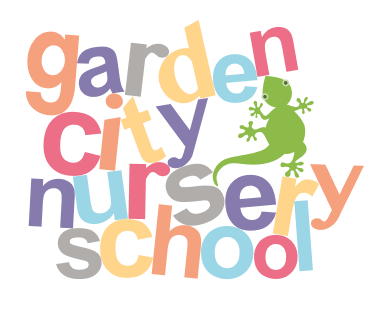Curriculum Overview
Much of what a child experiences at Garden City Nursery School is in line with the five Domains of the Early Learning Standards. The teachers at GCNS are well versed in the learning standards and plan their days accordingly. The school’s mantra of learning through play is maintained as the teachers plan thoughtful lessons.
Through their daily activities, the teachers work to prepare the children to seamlessly transition into Kindergarten by the end of the 4 year old program. View our Pre-K Curriculum Map.
-
How children become involved in learning and acquire knowledge.
Child finds various ways to problem solve
Can take objects apart and reassemble
Maintains focus on task
Asks for assistance
-
Children’s physical health and ability to engage in daily activities
Uses senses to assist and guide learning
Identifies
Compares and Contrasts
Uses Descriptive Words
Health and Well Being
Personal care and hygiene
Toileting, brushing teeth, washing hands
Self Dress, clean up
Recognizes when sick
Stay healthy through nutrition, sleep, water, rest, exercise
Safety Rules
Hold an adult’s hand at a busy street
Communicates unsafe behavior
Understands certain practices can be unsafe
-
Emotional competence and ability to form positive relationships that give meaning to children’s experiences in the home, school and larger community.
Recognizes self as unique
Identifies as part of a family
Compares and contrasts self to others
Understands range of feelings
Pride in work and sense of accomplishment
Self Regulation
Expresses feelings
Modifies behavior to situation
Interacts with adults
Understands and able to transition
Positive Relationship with Peers
Approaches already engaged children
Plays with others and sustains interaction
Shares
Develops close relationship
Offers help or shows concern
Trades, takes turns, compromises
Accountability
Follows rules and routines
Breaking rules has consequences
Different rules for different situations
Adaptability
Separates
Transitions
Adapts to strategies to cope with change
Ex., deep breathing
-
How children understand, create and communicate meaning.
Participates in small and large groups
Story telling
Singing
Finger plays
Asks Questions
Show and Tell
Listens attentively
Directions, information, stories
Initiates Conversation
Maintains eye contact
Background Knowledge
Uses vocabulary correctly
Makes comparisons
Viewing
Understanding social cues
Identifies emotions by facial expressions
Engages in pretend play
Literacy
Names letters
Names numbers
Difference between letters and numbers
Letter/sound correspondence
Group sound-a-likes
Letters form words
First sound of words
Recognize rhyme
Recognize own name
Recognize common signs and labels
Read left to right
Writing
Use combination of drawing , dictating or writing
Express opinions:
Ex: I like.. because..
Informative/explains what they are drawing for informational text
Provide a reaction
Production and Distribution
Add details to illustration
Use digital tools to produce something with peers
Research
With guidance, support and shared research, explore author’s books and express opinions about them.
Response to Literature
Create poem, dramatization, art work or personal response to an author or themed study
Speaking and Listening
Print upper and lower case letters
Form nouns with plural (s/es)
Understand question words
To/from, in/out, on/off, by/with, above/below, before/after, first/then/next/last
Capitalize
Write simple words
Sorting/categorizing common things
Opposites
Shades of words by acting out
Walk, march, strut, prance
-
What children need to know and understand about their world and how they apply what they know.
Counting
Number names
Count sequence
Count number of objects
People on a line
Compare numbers
Bigger, smaller
Operations
Addition is adding to getting larger
Subtraction is removing; getting smaller
Simple patterns
Measurement and Data
Describe and compare measurable attributes
Sort and count objects in a category
Geometry
Identify and describe shapes
Analyze, compare and sort objects
Count to 20
Represent a number of objects (0-5) with zero being no object
Written numbers (0-5)
Count/ one-to-one correspondence to 10
Understand that the last number name said tells the number of objects counted
Of scattered objects
Of objects in a row
Identify if number of objects in multiple groups are more, less, greater, fewer and/or equal to each other
Describe and compare measurable attributes
Such as length and weight: big/small, long/short, full/empty, light, heavy
Identify and describe shapes
Squares, circles, triangles, rectangles
Describe objects in the environment using names of shapes and describe relative position:
top/bottom, up/down, in front of/behind, over/under, next to
Name shapes regardless of size
Analyze, compare and sort two and three dimensional shapes.
Create shapes from components (sticks, clay etc)
